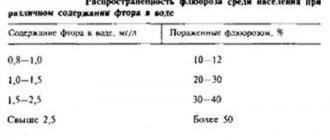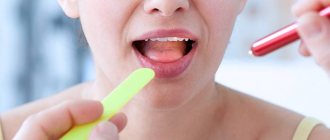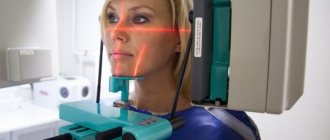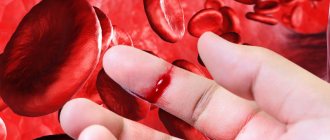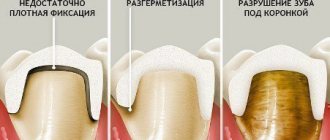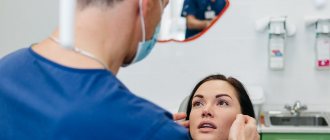Thanks to jaw movements, a person chews food, talks, and reproduces certain sounds. Together with the temporal bones, the lower part of the jaw forms a separate joint. If there is a malfunction of this composition, this can lead to a person’s jaw becoming jammed. In this case, it is simply impossible for the patient to close or open his mouth. In this article, we will look at the reasons why the jaw jams, as well as what to do in case of such a problem.
Cause of the problem
The culprit behind jaw jamming is precisely the joint we talked about above. From an anatomical point of view, this formation is very problematic. With strong mobility, its individual elements, such as processes, fossae, and the articular cavity, do not correspond to each other in size. Thanks to this structure of the joint, it is possible to move the lower part of the jaw to the right and left in order to carry out full chewing movements. Please note that statistics show that almost 70% of the world's population has a jammed jaw. The reasons can be completely different. The most common causes of jaw jamming are the following:
- dental treatment;
- malocclusion;
- prosthetics;
- injuries to the neck, face, consumption of rough solid food;
- bruxism, as well as the accompanying rapid abrasion of the enamel on the teeth;
- abnormal structure of the dentition.
There is also another theory why the jaw jammed. Experts explain this phenomenon by spasms in the facial muscles. The cause of the anomaly may be hypertonicity of the facial and masticatory muscles, as well as excessive speech load, for example in people of a public profession. Some doctors associate joint malfunction with psychogenic factors, that is, with dysfunction of the central nervous system. Emotional stress, which is caused by frequent stress, negatively affects the functioning of this joint.
Joint dysfunction also has a hereditary predisposition, if from birth the size of the head and articular fossa does not match. A common cause of jaw jamming is dislocation. This injury can occur while chewing hard food or if you open your mouth wide when yawning, or when using a mouth opener in the dentist's office.
Such a dislocation can be caused by injuries to the teeth and jaw, the habit of opening bottles with teeth, a shallow hole, too weak ligaments, as well as other anatomical joint features. It also happens that the jaw is jammed on one side. The reasons for such a phenomenon will be exactly the same.
Description and symptoms of jaw joint dislocation
Discomfort in the jaw area most often occurs due to problems with the temporomandibular joint. It is formed by the head of the lower part of the jaw and the tubercle of the temporal bone, which, together with the articular disc, are part of the capsule. The work of this joint is very complex and is associated with a whole set of muscles. If something goes wrong, not only the joint itself suffers, but also the muscles of the neck, head, and cranial nerves, resulting in chronic pain, most often from one – the problematic – part of the head.
Symptoms of TMJ dysfunction are varied - pain in the ears, head, and neck.
Why is it impossible to open your mouth wide or completely?
There are no nerve endings in the joint, so it does not hurt, but discomfort may occur. Toothache also often develops, and there is a feeling of squeezing of the eyes. Another key indicator of TMJ problems is jaw locking. The patient cannot completely close or open his mouth, and in order to make the desired jaw movement, he is forced to look for a position in which the joint functions normally. When moving the jaw left and right, clicking sounds are possible. Secondary manifestations of TMJ pathologies:
- irritability;
- sleep problems;
- general malaise;
- noise in ears;
- Bad mood;
- snore;
- xerostomia;
- muscle pain;
- twitching of the eye muscles;
- drop in visual acuity;
- paresthesia.
According to medical observations, the ANS (temporomandibular joint) plays the role of the center of balance of the whole organism.
Associated symptoms
An early signal of joint dysfunction is the characteristic clicking sound that is heard when opening the mouth. Other signs are as follows:
- malaise and weakness;
- insomnia;
- apathy or increased irritability;
- dry mouth;
- ringing and noise in the ears;
- muscle pain;
- night snoring;
- muscle twitching in the eye;
- decreased vision.
Classic signs of a dislocation are: difficulty chewing, difficulty speaking, dysphagia, severe salivation, pain in the area of the joints or one joint. The lower jaw looks visually slanted, shifted to the side, and the face becomes asymmetrical in appearance. The habit of chewing on any hard objects, as well as opening bottles with your teeth, can sooner or later result in a dislocated joint.
Constant clicking in the TMJ area when chewing
Before
Frontal photograph of the bite. There is an inclination of the occlusal plane of the upper jaw to the right side
Lateral photograph of the bite (right). Incorrect inclination of the maxillary incisors is noted. (Lower jaw lock). Stamped crown on tooth 4.6
Lateral photograph of the bite (left). Missing tooth 2.6
Photograph of the teeth of the upper jaw. Crowded position of the anterior group of teeth. Rotations of the molar and premolar groups. Erupted teeth 1.8, 2.8 (as one of the causes of traumatic nodes in occlusion). Asymmetrical dentition
Photograph of the teeth of the lower jaw. Secondary caries under old restorations on the molar group of teeth. lack of correct anatomy of the stamped crown of tooth 4.6. erupted teeth 3.8, 4.8
MRI slice of the left TMJ in the mouth opening position of 54 mm. The head of the joint extends beyond the articular tubercle, but to a lesser extent on the right side. (joint hypermobility)
MRI slice of the left TMJ in the open mouth position 43mm. Reposition of the disc is noted (the disc is in the correct position)
MRI slice of the Left TMJ in the closed mouth position. Anterior displacement of the articular disc is noted
MRI slice of the right TMJ in the open mouth position 54 mm. The head of the joint extends beyond the articular tubercle (hypermobility of the joint)
MRI slice of the right TMJ in the open mouth position at 43mm. The normal position of the articular disc is noted
MRI slice of the right TMJ in the closed mouth position. The normal position of the articular disc is noted
Stages
Frontal photograph of the bite. Beginning of correction of the inclination of the occlusal plane of the upper jaw
Lateral photograph of the bite (right). There is a rise in the bite due to orthodontic onlays
Lateral photograph of the bite (left). There is a rise in the bite due to orthodontic onlays
Photograph of the teeth of the upper jaw
Photograph of lower jaw teeth
After
Frontal photograph of the bite. There is no inclination of the occlusal planes of the upper and lower jaw
Lateral bite photograph (right)
Lateral photograph of the bite (left). The contact density in the molar area will be restored by replacing the temporary crown on the 2.6 implant
Photograph of the teeth of the upper jaw
Photograph of the teeth of the lower jaw. The temporary crown of tooth 4.6 needs to be replaced
Specialists:
Nazaryan David Nazaretovich
Description:
The patient complained of constant ringing clicks in the TMJ area when chewing, opening the mouth and moving the lower jaw. Entry MRI revealed joint hypermobility and disc dislocation with recovery.
After wearing Splint, positive dynamics, and analysis of the results of the control MRI, no indications for joint surgery were identified. The task was to rebuild the patient's bite to support the joint. Treatment with braces lasted 17 months. At this stage, implantation was carried out in the area of 2.6 teeth, removal of all 8 teeth, temporary prosthetics on an implant, as well as restoration of the erased cutting edges of the central incisors. After removing the braces, local orthopedic work will be performed to stabilize the bite.
What to do if your jaw is jammed?
So, we have figured out why a person’s jaw can jam. It is very easy to recognize disturbances in the functioning of this joint. They are accompanied by pain in the jaw itself, in the ears, head or neck. There may also be discomfort in the temples, cheekbones, and cheeks. In some cases, dysfunction is accompanied by toothache and a feeling of squeezing in the area of the eyeballs. Difficulty closing the mouth is a classic manifestation of this problem. Sometimes the joint jams completely, and in order to move the jaw from its place, the patient has to search for the most suitable position for a long time.
Complaints of headaches, pain in the TMJ area, clicking when moving the lower jaw
Before
After
Specialists:
Nazaryan David Nazaretovich
Description:
The patient came to the clinic with complaints of headaches, pain in the TMJ area, clicking when moving the lower jaw, and lack of stable position of the lower jaw.
From the anamnesis: about 6 years ago, prosthetics were performed in the lateral sections of the upper and lower jaw in another medical facility. Tooth 4.6 was removed for therapeutic reasons (exacerbation of chronic periodontitis).
At the time of examination, the patient had no lateral bite support on the right side and the 8th teeth on the lower jaw stood above the occlusal plane and created traumatic nodes during chewing. This could provoke a forced displacement of the lower jaw.
According to the conclusion of MRI of the TMJ, displacement of the articular discs with reposition was noted. (with restoration of position when opening the mouth)
At the rehabilitation stage, teeth 3.8, 4.8 were removed, the bridge structure on the upper jaw was removed and single composite crowns were made, implantation was performed in the area of the missing tooth 4.6, and a therapeutic and diagnostic mouth guard (Splint) was performed with preliminary diagnosis of the dental system and electrical myostimulation of the masticatory muscle group for fixation true position of the lower jaw.
During the active wearing of Splint and its corrections, the patient’s complaints resolved and subsequently required orthodontic treatment to ensure correct bite and support of the TMJ.
First aid
If your jaw is jammed on both or one side, what should you do? Please note that a joint can jam completely spontaneously, for example, when screaming loudly or chewing hard food for a long time. In such situations, it is necessary to be able to provide first aid until the doctor arrives.
So, let’s look at what to do at home if your jaw is jammed. A warm compress, such as a heating pad, should be applied to the sore joint. After this, on the contrary, a cold towel or ice is applied. Such contrast procedures should be repeated once an hour.
To get rid of pain, the patient should be given anti-inflammatory non-steroidal drugs, for example Analgin, Paracetamol, Ibuprofen. If indicated, local muscle relaxants are used, for example ointments, creams that relieve spasms and relax muscles.
Dissatisfaction with facial aesthetics, limitations in mouth opening
Before
Frontal photograph of the bite. Cross occlusion is noted on the right side. Absence of contacts of the premolar group on the left side. Tilt of the occlusal plane of the lower jaw to the left
Lateral photograph of the bite (right). Incorrect inclination of the frontal group of teeth in the upper jaw is noted. The lower jaw occupies a posterior (retracted) position
Lateral photograph of the bite (left). The incorrect inclination of the anterior group of teeth in the lower jaw is clearly expressed. Lack of closure of teeth in the lateral region
MRI slice of the right TMJ in the closed mouth position. The normal position of the articular disc is noted. Articular head of regular shape
MRI slice of the Left TMJ in the closed mouth position. There is a pronounced structural deformation of the articular head
MRI slice of the right TMJ in the open mouth position at 34mm. The normal position of the articular disc is noted
MRI slice of the left TMJ in the open mouth position 34mm. There is a limitation in the movement of this deformed joint. The articular disc is not in the correct position
After
Frontal photograph of the bite. Patient with a splint in the postoperative period
Lateral photograph of the bite (right). Ensures uniform contacts in the lateral sections
Lateral photograph of the bite (left). Ensures uniform contacts in the lateral sections
Specialists:
Nazaryan David Nazaretovich
Description:
The main complaints of the patient in this clinical case were dissatisfaction with facial aesthetics (the lower jaw is shifted to the right side) and limitations in mouth opening with pain in the area of the left TMJ. The entry MRI of the TMJ shows a pronounced deformation of the head of the left condyle with unreducible displacement of the articular disc.
The patient was recommended to undergo surgical treatment of the TMJ with preliminary production of Splint in preparation for the operation and subsequent use of this mouth guard in the postoperative period to support the joint structures during the healing period. The second stage of treatment for this patient will be orthodontic treatment in preparation for orthognathic surgery aimed at changing the position of the jaw bones and eliminating asymmetry.
Medical measures
So, we continue to consider what to do if the jaw is jammed and the mouth cannot open. In order to have an effective professional method of treating joint dysfunction, it is necessary to eliminate the main cause of the problem. Thus, specialists apply special orthopedic splints to patients to normalize the functioning of the joint. In parallel with this, drug therapy is carried out to relieve the symptoms of the inflammatory process. In severe cases, surgery is required to regenerate individual areas of bone tissue. Complex therapy for joint dysfunction necessarily includes physiotherapy.
To the dentist!
The cause of discomfort may also be due to incorrect position of the teeth. In this case, you will need the help of a maxillofacial dentist who will supply temporary or permanent splints and dentures that correct the incorrect position of the jaw.
Article on the topic
A tooth for a tooth: what happens if the jaws don’t close?
A rehabilitation doctor can help if the pain is caused by increased tone or tension of the masticatory muscles, limited mobility of the lower jaw, incoordination of contractions of the masticatory muscles, excessive mobility of the head of the lower jaw (sometimes this causes “clicking” in the temporomandibular joint).
Pain and clicking disappear after normalization of the function of the masticatory muscles and joint, except in cases where arthrosis deformans and inflammation in the joint are diagnosed. Then treatment should begin with following the recommendations of a rheumatologist and orthopedist.
Physiotherapy
Physiotherapy, first of all, should include a gentle speech regime. Experts also recommend that their patients stop eating foods that are too hard and difficult to chew. You should also normalize your daily routine. It will be useful to do special gymnastics for the facial muscles at home. Those patients whose jaw is jammed should avoid stressful situations and promptly cure all local and systemic dental ailments of an infectious and inflammatory nature.
If your jaw is jammed due to dislocation, you should immediately seek help from a doctor, dentist or maxillofacial surgeon. This specialist realigns the joint in case of a unilateral injury without anesthesia, and also under general anesthesia if a bilateral injury has been diagnosed.
Diagnostic methods and methods
CT scan of the jaw allows you to identify disorders in the TMJ.
In case of a one-time dislocation without signs of injury or inflammation, it is recommended to set the jaw without a preliminary examination. If the patient complains of frequent clicking on the left or right and cannot close his mouth on his own, an experienced dentist or traumatologist should correct the situation.
It is visually impossible to determine the reason why the jaw is pinched. Depending on the symptoms and the expected diagnosis, the doctor suggests doing:
- radiography;
- magnetic resonance imaging;
- computer scanning;
- examination of synovial fluid;
- determination of autoantibodies in the blood;
- panoramic photograph of the lower jaw.
For inflammation, signs of intoxication and gout, the doctor additionally prescribes blood and urine tests and determines the level of uric acid. If necessary, conducts rheumatic tests; if inflammation of the ternary nerve is suspected, refer for consultation to a neurologist.
Risk area
Oddly enough, but mostly representatives of the fair sex come to medical clinics with this kind of problem. The fact is that the female ligamentous apparatus is less developed than that of the representatives of the stronger half of humanity. In addition, the glenoid fossa in women is much smaller than in men. It is for this reason that the joint pops out of it more easily.
However, men should not relax in this case either. Past diseases, such as polyarthritis, gout, rheumatism, place all patients in the same risk zone. Irreversible changes occur in the ligaments, the jaw apparatus weakens, and the likelihood of injury increases several times. Those men who are accustomed to opening various types of containers with their teeth are especially at risk.
Please note that male jaw dislocations will be much more difficult to resolve than female cases. Initially, the main factor or disease that provoked the dysfunction should be eliminated, and only then the joint should be set back into place. If the disease is not stopped, then this kind of problem may arise again.
Possible complications
In the absence of proper treatment, the primary dislocation of the jaw turns into an old one, and if you correct it yourself incorrectly (we strongly advise you not to do this), over time, with a high degree of probability, the need for surgical intervention will arise. This material will tell you what to do if toothache radiates to your temple.
The main complications of TMJ dislocation:
- bruxism;
Bruxism or teeth grinding leads to excessive tooth wear or complete loss.
- erasing enamel;
- pain when chewing;
- clicks;
- arthrosis
A medical consultation is required, since a jammed jaw may indicate not only a dislocation of the joint, but also a fracture, osteomyelitis of the jaw, arteritis of the facial artery, and dysfunctional changes in the jaw apparatus. And the sooner they are detected, the more positive the treatment prognosis will be. Find out why you grind your teeth in your sleep here.
If your jaw is jammed, your doctor will first try conservative methods, and if they don’t help, he will recommend other options.



